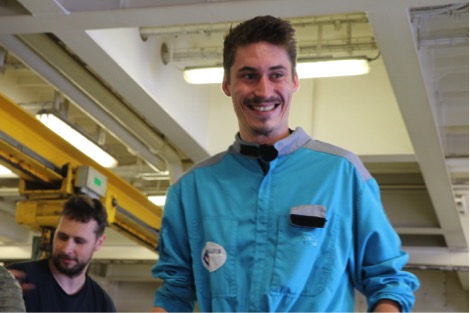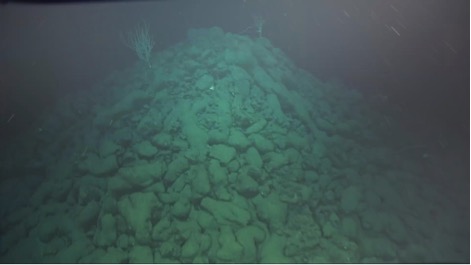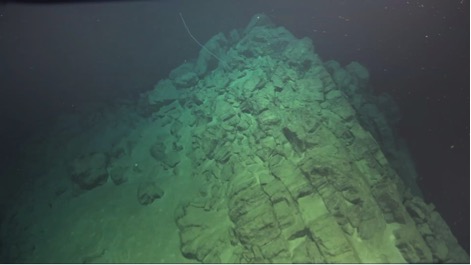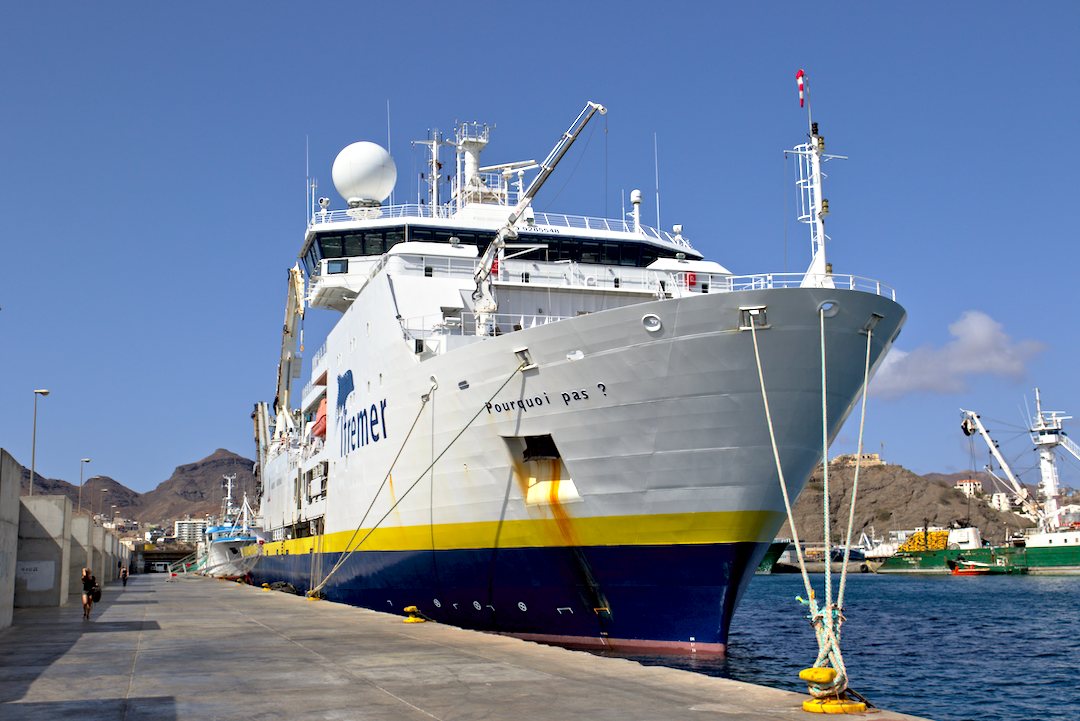The aim of the dive was to explore some possible young seamounts located in an intermediate position between those explored during dive 13 (south of the main core complex) and some from the central oblique ridge axis (dives 16-18). It was also Gil’s first dive and birthday, our co-pilot of the day, who by the way did great job.
The dive was divided into 2 profiles. The first one was heading east, crossing a fault plan (N150), and aiming at reaching the top of 2 visible mounts on the bathymetry. Then, we planned to head south in order to explore another and higher seamount.

First dive ever, and birthday of my co-pilot Gil. P. G. Ceuleneer. © Ifremer 
Top of seamount © SMARTIES cruise 
Tilted lava flows. © SMARTIES cruise
We collected 17 samples, all basaltic, and relatively fresh. The area was moderately to highly sedimented. We found the first basaltic outcrop one hour after our arrival on the seafloor. It was very sedimented and cut by small faults (N115). Then, on the sedimented slope of the first seamount, we found a serie of successive faults, oriented N150. They were exposing nice, in place, pillow basalts. When we arrived at the top, we were surprised to find that it was a fault surface oriented N90, with more massive basaltic flows tilted almost vertically.
The slope of the eastern-most seamount was less sedimented, and composed of slope pillows, very elongated. We followed the flow direction of these pillows to reach the top of the volcano, made of broken pillows.
Heading south, we found again series of faults (both N150 and N115) exposing the basalts. On our way to the last seamount, we discovered another little volcano, shaped by very elongated, in place, pillows. Finally, we reached the top of the southern seamount through its west side. There, we could observe a clear increase in the volume of pillows in the upper part of the volcano, with very few sediments. Finally, our dive ended up with an elegant view on the “mouth” of the volcano, with pillows flowing in all directions.
By. B. Mougel
